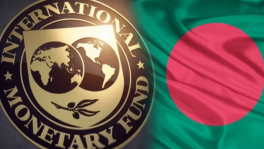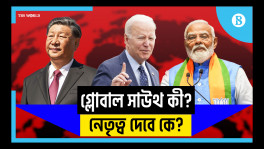The reshuffle is meant to secure Brand Modi
The exits and expansion were motivated by the need to protect the PM’s image and send a signal to OBCs, crucial to the BJP’s electoral prospects in UP

Commentators falling back on the usual tropes to understand the changes to the new Narendra Modi Cabinet have predictably fallen short.
While the Bharatiya Janata Party (BJP) and its supporters have wanted the focus to be on the new entrants, the technocrats and professionals, the women, and the caste rainbow, media attention has invariably remained focused on the exits.
But if there is any one message that emerges from the ministerial reshuffle, ironically, it is this. Ministers have never mattered less in the politics of India. Since the ascent of Narendra Modi in 2014, the country's electoral choices, at least on the national stage, have been moving towards a presidential variation on a parliamentary democracy. Without a strong and compelling protagonist at the heart of the story, it is almost impossible to script an imaginative political drama any longer, whether in the states or at the Centre.
This may seem counter-intuitive in the face of such significant alterations to the council of ministers. But think about it. The removal of 12 ministers has one singular aim — to insulate Brand Modi from the perceived inefficiencies, failures and controversies of his government.
With these changes, the Prime Minister's (PM) aim is to keep his own story unsullied and to suggest that, as the man in the lead role, he was let down by his supporting cast.
That Harsh Vardhan has been shown the door in the aftermath of the lethal second wave is a no-brainer. Yet, everyone knows that the accountability for the callousness and clumsiness of government response, especially in the early stages, can hardly be placed at his door alone. As health minister, Harsh Vardhan was bumbling and incompetent for sure, but was hardly empowered enough to take many of the critical decisions, whether on vaccine procurement or the cancellation of mass congregations.
Therein lies a tale.

Amid mass graves of abandoned Covid bodies, anger among BJP voters over shortage of oxygen and intensive care unit beds, and soaring fuel prices, these changes to the Cabinet appear to be the PM's attempt to reclaim the narrative at a time when the electoral consequences of the pandemic are still unclear.
It is hard to believe that either Ravi Shankar Prasad or Prakash Javadekar, in charge of the information technology and information & broadcasting ministries respectively, had taken on big tech companies such as Twitter or formulated contentious new digital content guidelines without specific nudging from the top.
Many theories have been put forth to understand their removal, including the need to keep Washington on India's side. Perhaps the ministers showed less finesse and sophistication than was needed and brought embarrassing global attention to their mandates. But in their exits, the brutal truth of realpolitik is once again on display — sycophancy does not make you any less dispensable.
With the next election three years away, and Covid-19 dragging the BJP into unchartered waters, more than anything less, the PM's attention will be taken up by the outcomes in state assemblies. Brand Modi needs a win in Uttar Pradesh in 2022 to remain unchallenged. The number of ministers from UP (15) and Gujarat, both due for assembly polls. tells only half the story.
The elaborate caste configuration of the Cabinet reinforces the growing mandalisation of the BJP's politics. The carefully engineered representation seeks to shrug off the Brahmin-Bania tag. With its emphasis not just on Dalit representation, but also on the middle castes, the party understands that the Other Backward Classes (OBC) vote is the layer over which Hindutva politics has to be constructed.
Three decades ago, VP Singh, the crafty former PM, posited the politics of social justice in opposition to the politics of Hindutva. Caste-based parties of UP and Bihar were the main bulwark that stood against the BJP juggernaut with LK Advani at the steering wheel. Today, history has turned full circle. Advani is out in the wilderness and the BJP can weld OBC politics with hard Hindutva, depending on the state and the circumstance.
Till the Opposition is able to throw up an alternative national personality to take on Brand Modi, one around which a different play can be scripted, this will remain the main import of the Cabinet expansion.
Barkha Dutt is an award-winning journalist and author.
Disclaimer: This article first appeared on Hindustan Times, and is published by special syndication arrangement.


 Keep updated, follow The Business Standard's Google news channel
Keep updated, follow The Business Standard's Google news channel















